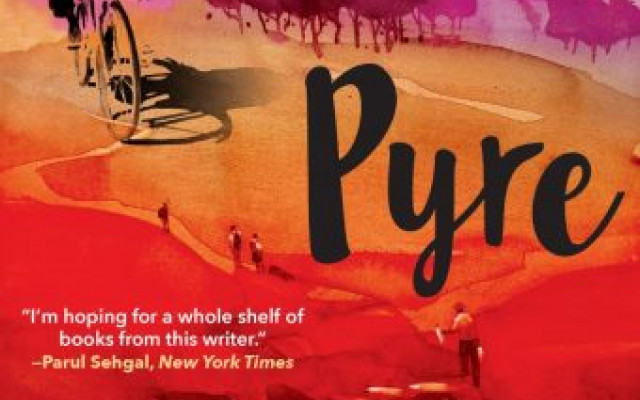Interview: The Celestial Sa’di and A Labor of Love

What impetus could possibly compel someone to spend a solid seven years breathing new life into a collection of thirteenth-century Persian prose and poetry? To juggle their full-time teaching schedule with arduous translation of a formidable work of literature? For Mahmoud Rezvani, who recently carried out the first rhythmic translation of Sa’di’s Golestan (The Rose Garden), the answer was “a sense of duty towards posterity,” catalyzed by his relentless curiosity.
Rezvani’s vivid and virtuosic translation was recently endorsed by UNESCO, who has offered to be its exclusive publisher; the book is also due to be officially announced as a work of cultural heritage in a ceremony at Tehran’s Sa’adabaad Palace.
“Translating Golestan was my lifelong dream,” says Rezvani, “Iranian translators mostly translate from a foreign language into Persian. The reverse, though, happens rarely. Unfortunately, as a result, many of our exquisite literary works have remained obscure.”
Most avid readers of classical Persian poetry happen to know of Hafiz, Rumi or Khayyam, but Abu-Muhammad Muslih-al Din-bin Abdallah Shirazi, better known as Sa’di, has often been overlooked by Iranian and non-Iranian translators alike. “Among our illustrious poets, Sa’di is undoubtedly one of the highest peaks; according to many, the highest,” says Rezvani, “However, he is not universally acknowledged, as he deserves. So, I took it upon myself to do something in this regard.”
Ralph Waldo Emerson was one of Sa’di’s admirers, and treasured the poet’s sagacity. However, the available translations of his era were fairly inaccurate. So, Rezvani asked himself, “What if Emerson had grasped the true meaning of Sa’di’s words?’ He was fascinated by the thought of how Emerson would have reacted had he read a richer rendition of Golestan, which is drenched in allegory, allusion, and assonance.
Rezvani has been teaching translation, simultaneous interpretation, etymology, and English and Persian literature for forty-five years. And the thought of retiring doesn’t cross his mind. In fact, he still teaches full time, six days a week, at the Simultaneous Interpretation Preparatory Courses Institute in Iran, where he is also the managing director. “If I were born again, I would definitely choose the same path and become a teacher,” says Rezvani. In addition, he is a visiting speaker at UNESCO and Tehran University’s Faculty of Foreign Languages.
Rezvani does not look the part of the traditional literary scholar. Though turning sixty-two this March, he carries his six-foot frame with the vigor of a much younger man; the only evidence of his age is the salt-and-pepper of his short cropped hair and handlebar moustache. A long-time practitioner of martial arts, he is famous for not sitting during a lecture in more than forty-five years, not even for five minutes. He is also quite dapper. “My students sometimes wonder if I ever wear anything other than a three-piece suit,” he says in a playful tone.
As a teenager, Rezvani’s passion for math drove him to obtain a bachelor’s degree in Statistics. With a jovial visage, suave demeanor and surprising sense of humor, Rezvani could easily be mistaken for a comedian or a singer (having a background in awaaz, classical Persian singing, makes this even easier).
On March 18, Rezvani will read from his translation at University of California in Berkeley before more than a hundred aficionados of classical Persian literature, many of whom will be celebrating the Persian New Year, Norooz, two days later. Consider below some of his reflections on the experience of translating such a monumental piece of literature.
—Siavash Saadlou
You spoke about why you decided to translate Golestan, but who planted the seed of love of Sa’di’s work in you?
My father was the most influential person in my life, and he planted the seed of affinity for Sa’di’s writings in me. It wasn’t just Sa’di. Because of my dad, I realized that the depth of learning is more important than its length. He would read me Sa’di since I was six. He also insisted that I stay in Isfahan for my early education, which was fairly rigorous and traditional. He pushed me to go to a school where I would hone my skills in the Arabic language and Koran studies. I also had to practice Persian calligraphy every night under my father’s tutelage. I even had to write down a short poem from one of the stories in Golestan at the end of every calligraphy practice. The poem was this:
پسر به مکتب داد لوح سیمینش در کنار نهاد پادشاهی
بر سر لوح او نوشته به زر جور استاد به ز مهر پدر
And this is my translation:
Once upon a time a king sent his son to school,
He laid beside him a silver slate as a writing tool.
Atop the slate, the king had these words written in gold:
“Better than the father’s affection is the teacher’s instruction, though harsh and bold.”
What else, especially regarding Sa’di, did he teach you?
You know that bibliomancy, or in other words, divination by means of books, is a common practice in Iran. Unlike most people who use the holy Koran or the Divan of Hafiz for this purpose, my father would use Sa’di’s Tayyebaat, which is a segment of Sa’di’s corpus. We would randomly open the book to a poem, and by interpreting the poem, we would attempt to foretell the future, and since everybody is eager to know what is going to happen in the future, my father, who was like a natural-born psychologist in my estimation, would arouse my curiosity by encouraging me to read more and more of those poems, and that was how I became familiar with this pinnacle of beauty.
What particular literary devices make Golestan a challenging book to translate?
Well, for me, what makes Golestan very difficult to translate is that it is replete with different types of rhyming prose: parallel, symmetrical, and lop-sided. Rendering these literary devices is really a tough row to hoe.
Did you come across untranslatable words in Golestan?
There are some Persian words and concepts for which there are no equivalents in English. Therefore, you have to either use a near-equivalent or simply describe them. Also, there are phrases that allude to certain events. Some of these allusions are really hard to translate.
Translating Golestan must have been a trilingual project. There is a lot of Persian, a lot of Arabic, and now you’ve translated all of that into English. In addition, you have carried out the first rhythmic translation of the book. What in your educational and personal background prepared you for this translation?
To translate a magnum opus like Golestan, you have to be equipped with several skills and endowed with certain talents. You have to have a mathematical mind to comprehend the parallelisms and symmetries introduced for rhetorical effect. You have to know music to do justice to the harmony. In other words, if you can’t carry a tune in music, you won’t be able to wrap your head around translating this book, no matter how educated or well-versed you are. Since I have studied statistics, Persian, English, Arabic, and music, I found myself eligible to give it a try.
Did you ever have to rely on the thesaurus to find the mot juste?
I did sometimes consult a thesaurus or a rhyming dictionary, but often relied on my own knowledge. I believe it was my teaching experience that obviated the need for using dictionaries so often and helped me with choosing the mot juste.
How did you persevere with such a task? Did it depend on a certain mood or state of mind to be able to translate? Did you have a schedule?
Like doing any other work of art, you need to be inspired by something or someone and feel the urge to do it. It is not a mechanical task for which you can have a fixed schedule. Sometimes, for days, I did not feel like translating even a sentence, but sometimes I would feel the words and concepts surging inside me, and regardless of what time of the day it was, I would immediately start translating.
How many times did you think you had come across an insurmountable challenge when translating Golestan?
I haven’t counted the number of times I have encountered such moments, but I must confess that at first sight, you will find almost each and every single page of this book to be an insurmountable barrier, but once you summon your determination, knowledge, and self-confidence, you find that no obstacle is insuperable.
How did you walk that fine line between being “meticulous” and being “obsessive” in your work?
The only impeccable writers are those who never wrote. So, I simply told myself I will do my best. I knew that I only had to be meticulous and rely on my passion and skills in order do justice to this unparalleled masterpiece.
In what ways did the previous translators of Golestan fail in their work? What are the egregious errors and shortcomings in earlier major translations, especially those carried out by James Ross and Edward Rehatsek?
One of the worst mistakes was the misunderstanding of homographs and heteronyms. To give you an example, just imagine what will happen if one takes the word “bass” in music for “bass” which is a kind of fish. Also, in a number of cases, they have misconstrued the text totally and the result was not even a distorted account of the original story, but something absolutely different and absurd.
Your translation of Golestan contains slight archaic language. Was there a reason why?
I have intentionally employed two types of languages: modern English for the prose and old English for the verse, because I thought it would be redolent of Sa’di’s era and sounds more poetic as well.
There are translators of Persian poetry who employ the process of “addition” or “deletion” to contrive rhyme. You have even coined a funny noun in Persian for it (ghafoondan: the act of creating rhyme forcefully). You have almost never added or deleted words in your translation, yet the rhyme is always perfect. How did you accomplish such a feat?
I really can’t find a way to explain how. All I can say is that this translation was a labor of love, and when love is involved, all otherwise acknowledged norms and standards will go topsy-turvy. That is, you put two and two together and you find the total to be 29.73, not four. Love defies common sense and logic. It’s crazy. At the same, love is the ultimate healer and renders the impossible possible. Love and logic are just mutually exclusive, and certainly in this project, it was love that worked wonders.
Do you recall your favorite moment of epiphany during this project
On one occasion I needed four rhyming words, and I had found only three of them. I could have easily reshuffled the words to make the verse work, but since I have always been adamant that I should remain loyal to the original text, I resisted that urge. I was confident that I would find the remaining one. Finally, one night, when we were at a friend’s home, that very word was revealed to me at the dinner table. I shouted eureka and asked them to invite us more often.




